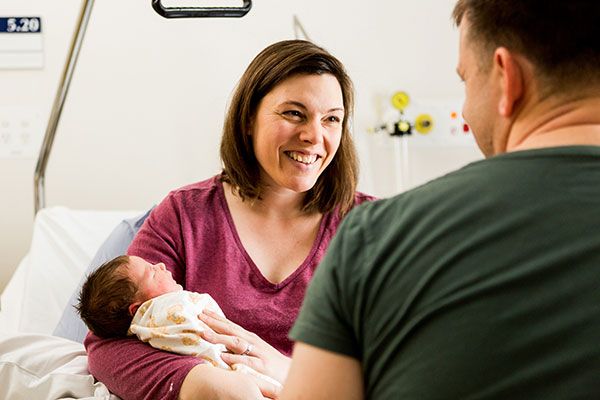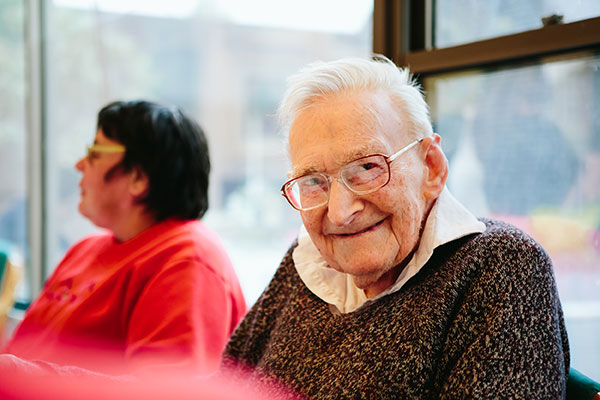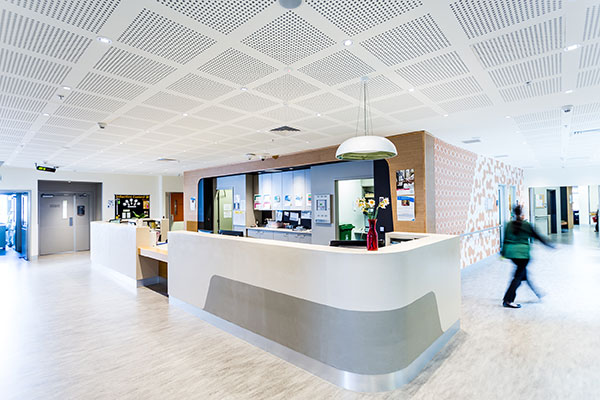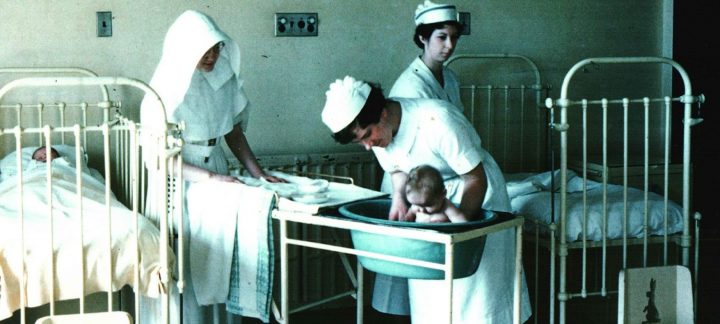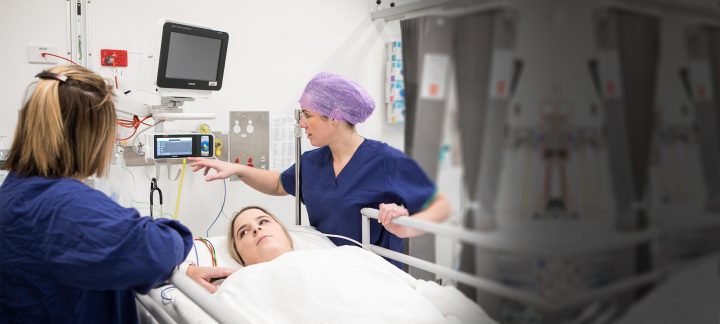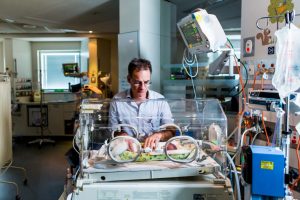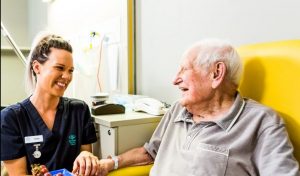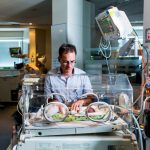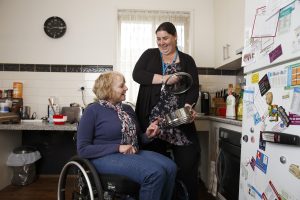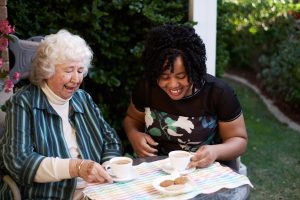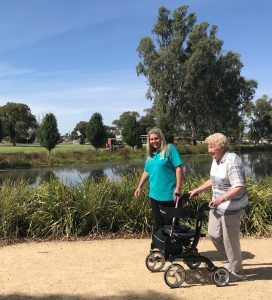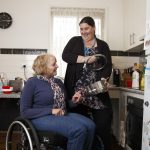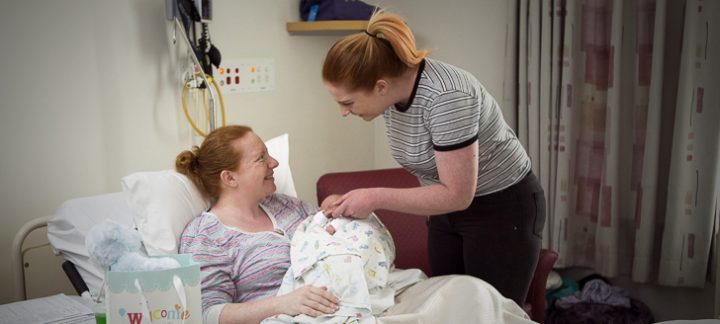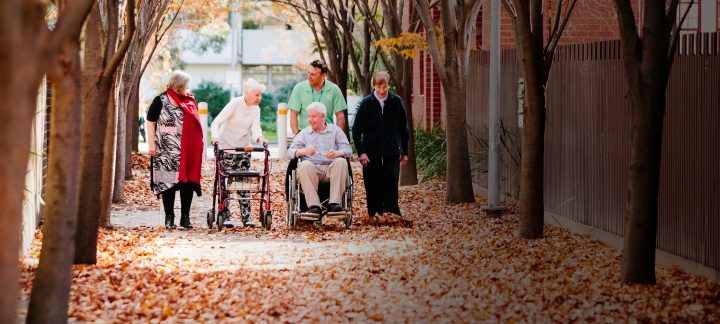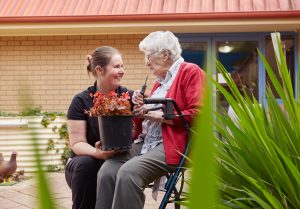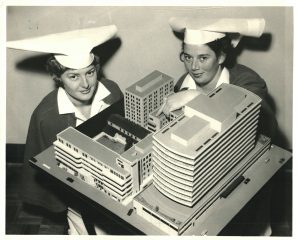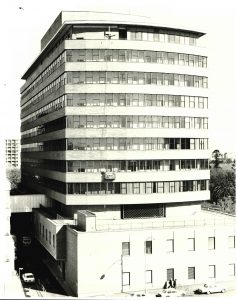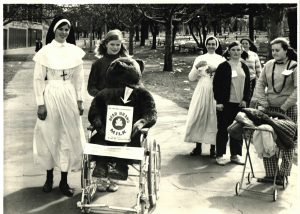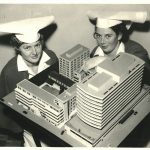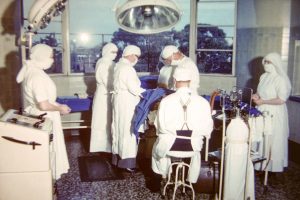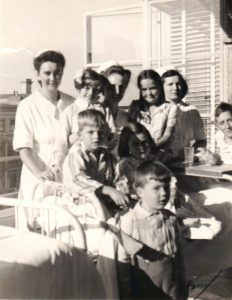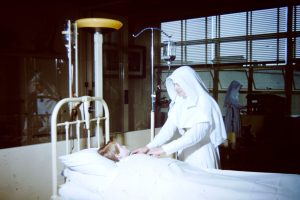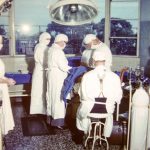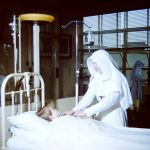-
2020
Mercy Health marks a centenary
In this centenary year, Mercy Health is celebrating important milestones and honouring the many people who have and continue to work tirelessly to provide exceptional care.
-
Celebrating 100 years of Mercy Health. The Sisters of Mercy established their first hospital, St Benedict's Hospital in 1920 in response to the flu epidemic that began in 1918.
-
Mercy Health today
Today, Mercy Health is made up of 10,000 people who are united by our shared mission: to bring God’s mercy to those in need.
Mercy Health now includes two major public hospitals in greater Melbourne: Mercy Hospital for Women in Heidelberg and Werribee Mercy Hospital in Melbourne’s rapidly growing southwestern metropolitan area. Mercy Health also has subacute hospitals in Albury and Young in New South Wales. We also care for people in 34 residential aged care homes and 10 retirement villages around Australia, and in 2019/20 there were 11,441 people living independently in their homes with the support of our Home Care Services.
Mercy Health undertakes research in partnership with Australia’s leading universities, with the aim of improving the lives of everyone we serve. Finally, through the Mercy Health Foundation, Mercy Health raises funds to support our charitable work.
-
2020
November
Werribee Mercy Hospital receives funding to finalise next stage of expansion
As part of the 2020 Victorian State Budget the Victorian Government announced $4.8 million to finalise the architectural and service plans commenced in 2016 for the construction of Stage 2 of the Werribee Mercy Hospital expansion.
-
2020
25 January
First coronavirus case detected in Australia
Australia introduces coronavirus lockdowns when the number of coronavirus cases begin to escalate in March.
-
2018
August
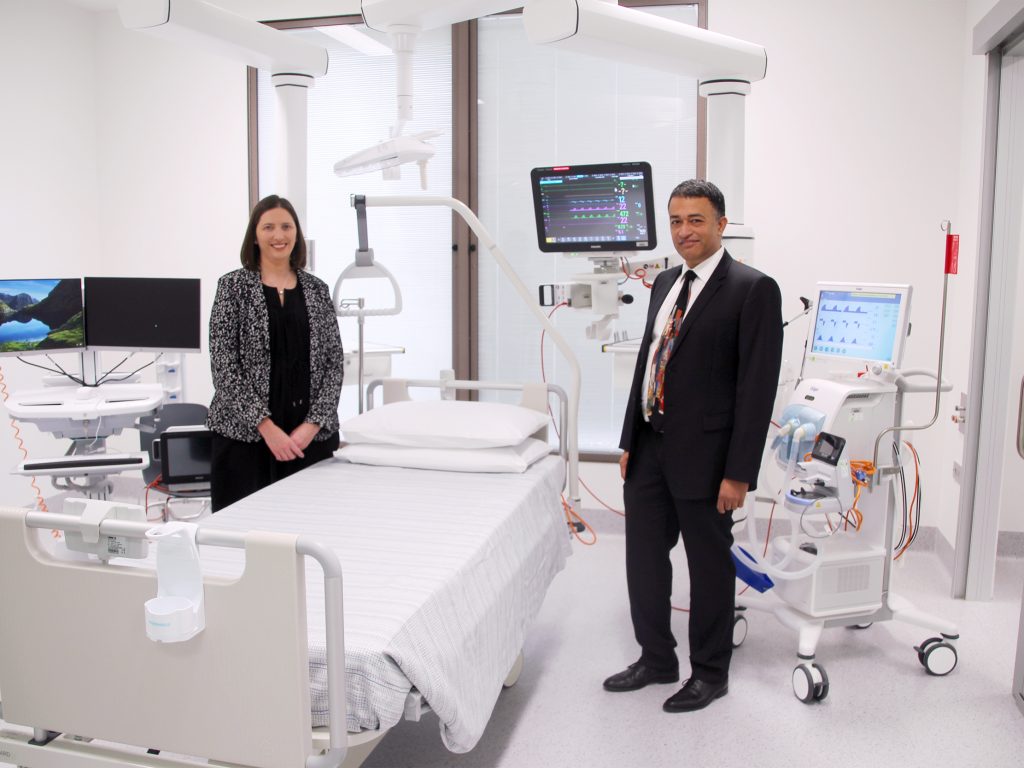
Werribee Mercy Hospital expansion opens
Werribee Mercy Hospital opens an expansion to its Catherine McAuley Centre, bringing state-of-the-art intensive care to Melbourne’s western suburbs. The expansion includes 56 new inpatient beds, six new operating theatres, a Central Sterilising Department, an Intensive Care Unit with eight beds and a wellness room and gardens.
-
2018
August
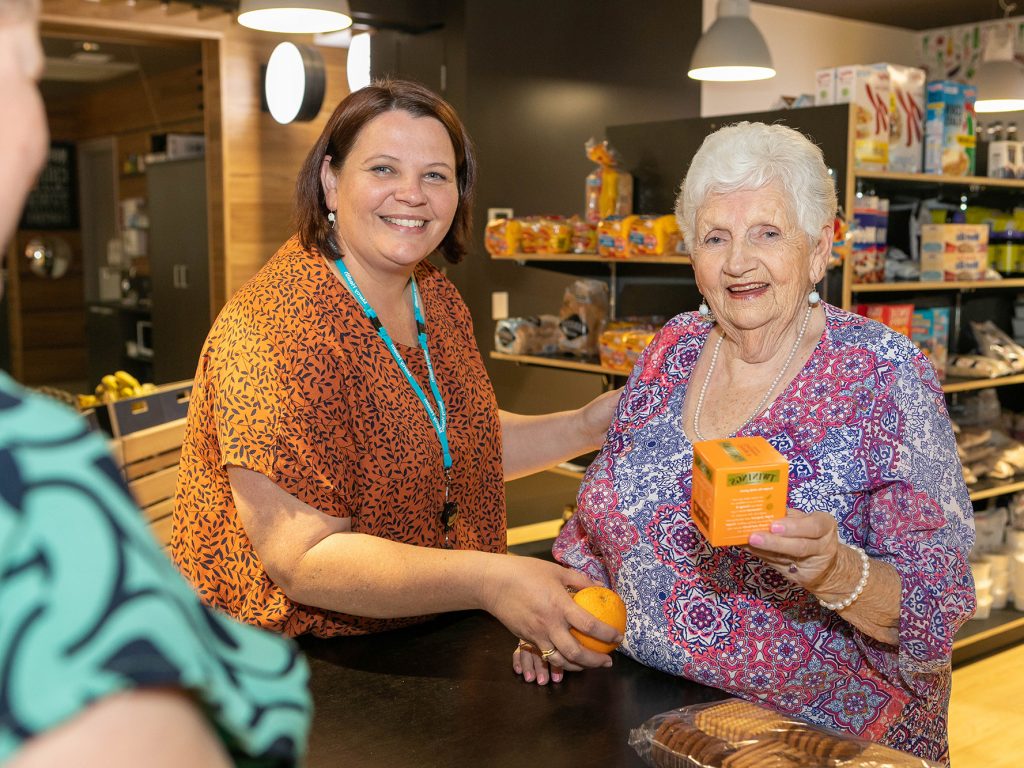
Ballarat’s newest and most innovative aged care home, Mercy Place Ballarat, opens its doors to the public
Our innovative small household living approach and the building itself are designed with integrated dementia care in mind and for people living with restricted mobility.
-
2018
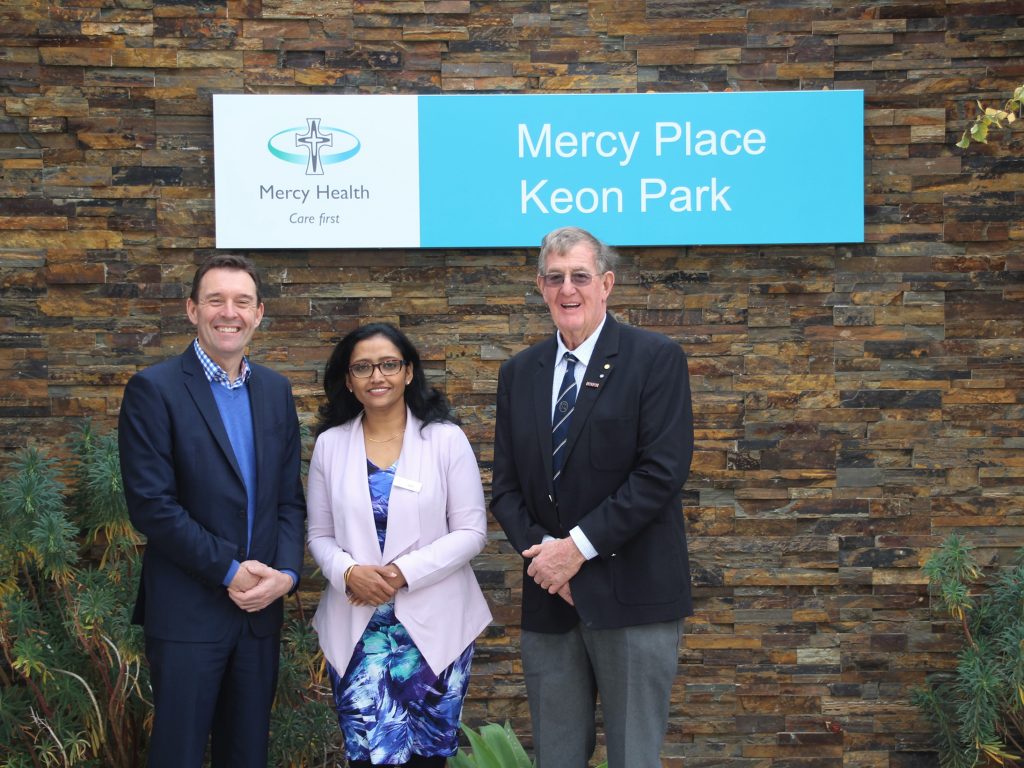
Southern Cross Care (Vic) becomes part of Mercy Health
-
2016
5 December
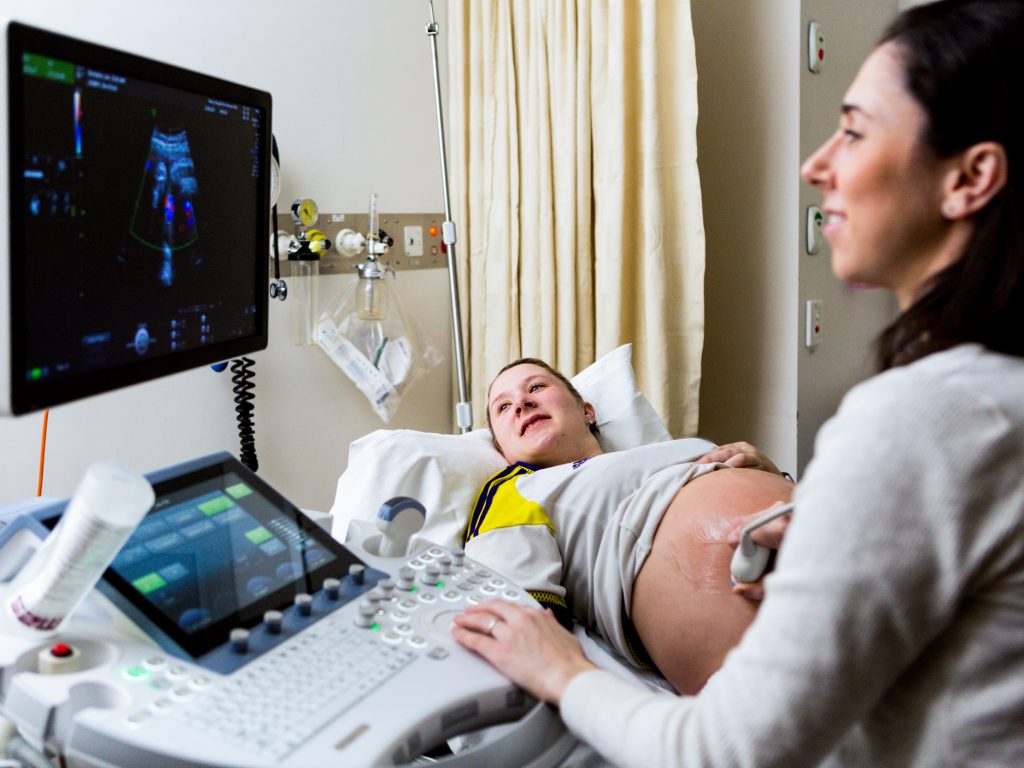
Mercy Perinatal launch
Commencing in 2014, Mercy Perinatal led by Professor Stephen Tong and Professor Sue Walker AO established a perinatal medicine centre of excellence uniting the three pillars of education, clinical care and research, committed to bring mothers and babies, here and around the world, safely home.
-
2011
22 February
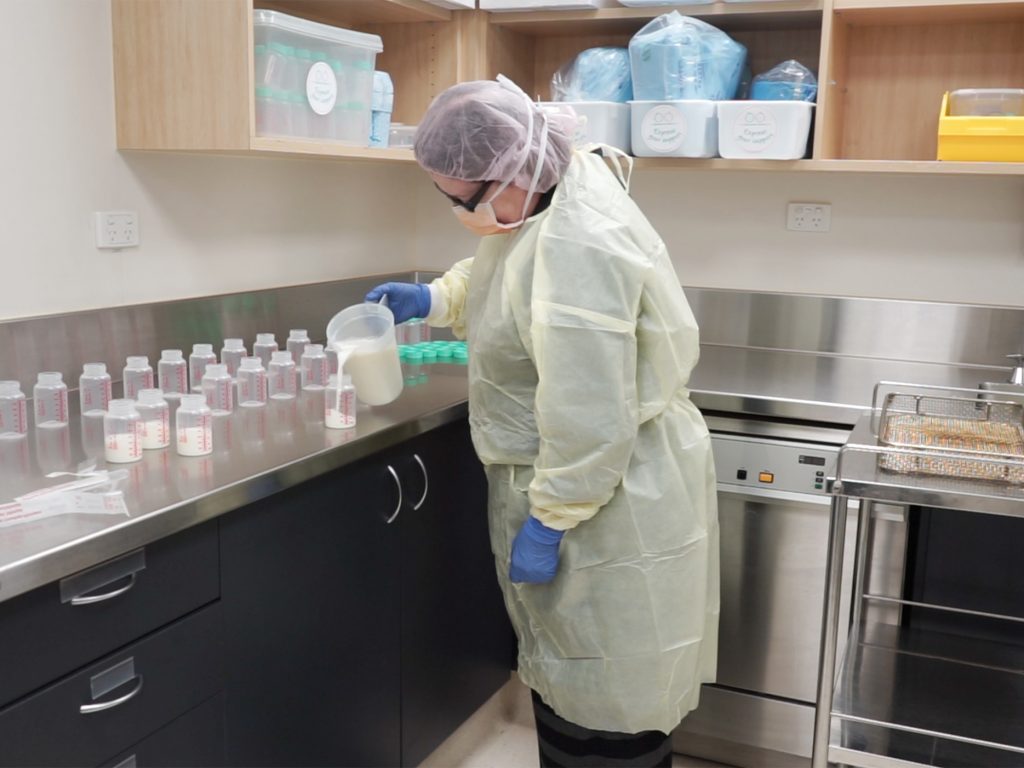
Mercy Health Breastmilk Bank
The Mercy Health Breastmilk Bank provides vulnerable infants in the special care nursery with access to safe, screened and pasteurised donor milk (PDM). Established in 2011 with the support of Mercy Health Foundation, the State Government has given support for the Mercy Health Breastmilk Bank to be extended to provide breastmilk to newborns in neonatal intensive care at the Royal Women’s Hospital, Monash Medical Centre and the Royal Children’s Hospital. Donations for the expansion of the Mercy Health Breastmilk Bank to all neonatal intensive care nurseries in Victoria can be made via Mercy Health Foundation.
Make a donation -
2009
May
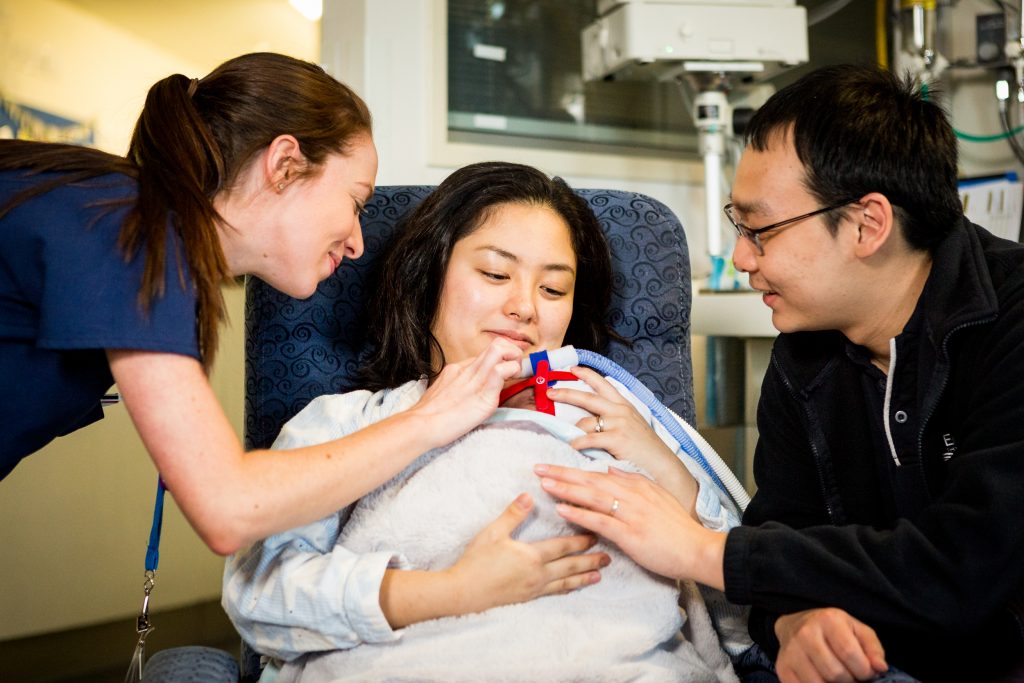
Mercy Health Foundation is established
Mercy Health has always relied on the kindness and compassion of the community through their generous donations. In May 2009, Mercy Health Foundation was established, formalising its long tradition of philanthropic fundraising.
Find out more -
-
2007
Mercy Health expands into home and community care
-
-
2005
May
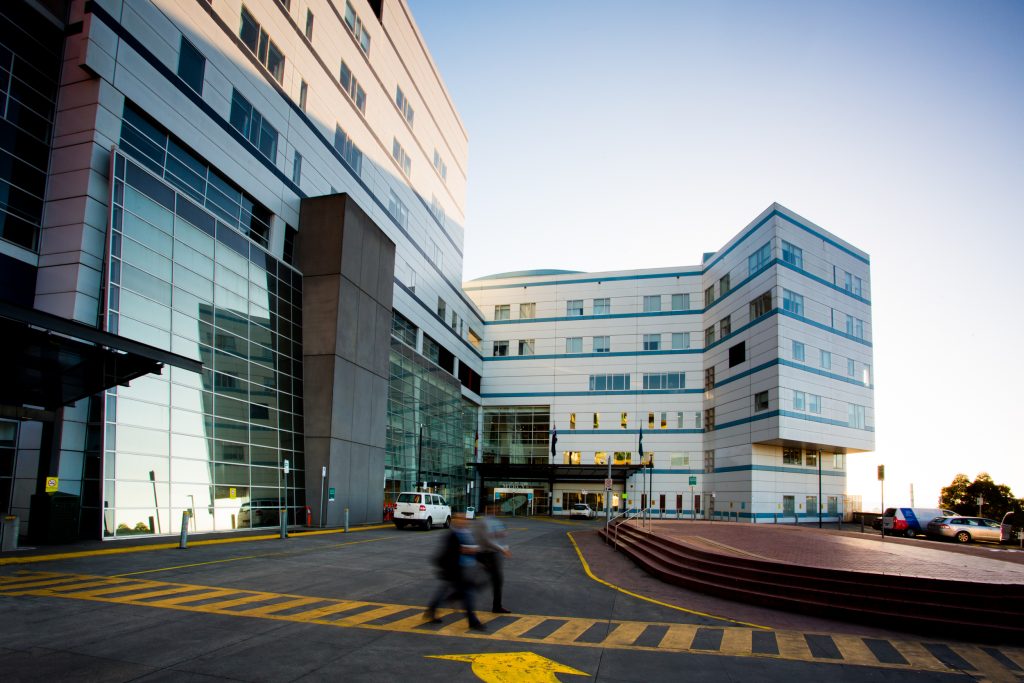
Mercy Hospital for Women moves to Heidelberg
Mercy Hospital for Women moves from its East Melbourne address to a new home.
-
It's only bricks and mortar, it's really service and care that we should be on about
Sr Joan Keenan, Sister Administrator, Mercy Maternity Hospital 1971-1984 -
1998
Mercy Health O’Connell Family Centre
The Mercy Health O’Connell Family Centre in Canterbury, formerly run by the Grey Sisters, comes under Mercy Health’s management.
-
1997
to 1998
Mercy Mental Health
Werribee Mercy Hospital embraced the invitation by the Department of Human Services, Victoria to manage psychiatric services for the Western corridor of the state. 24 new acute psychiatric unit beds commissioned in September 1997 and 20 new Community Care Units in November 1997.
The following year the State Government requests Mercy Health & Aged Care Inc. take over management of mental health services in Melbourne’s south west. This includes the Saltwater Clinic in Footscray.
-
-
Mercy Health and Aged Care formed
-
1996
Mercy Health and Aged Care was formed in 1996 to ensure the organisation could continue to meet society’s changing needs.
-
-
1994
20 February
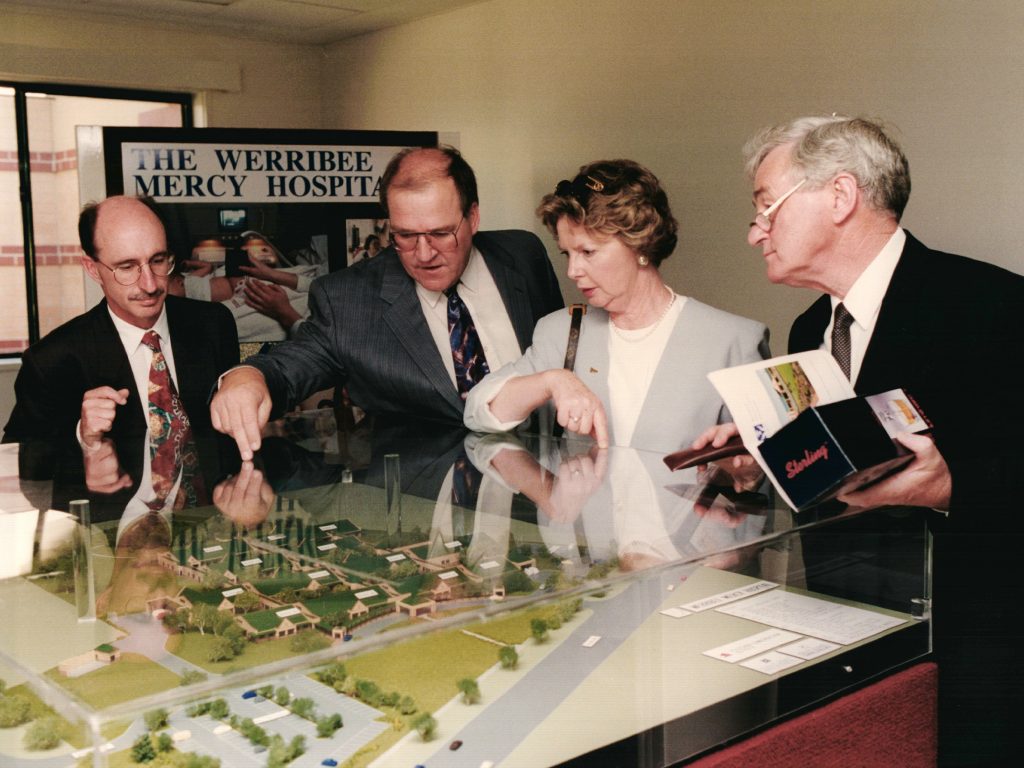
Werribee Mercy Hospital opens
Mercy Health expands its services to the outer western suburbs of Melbourne by opening Werribee Mercy Hospital. In the early 1990s, the population of Wyndham had exceeded 60,000 and the local community needed a general hospital to meet its ever-expanding healthcare needs.
-
1991
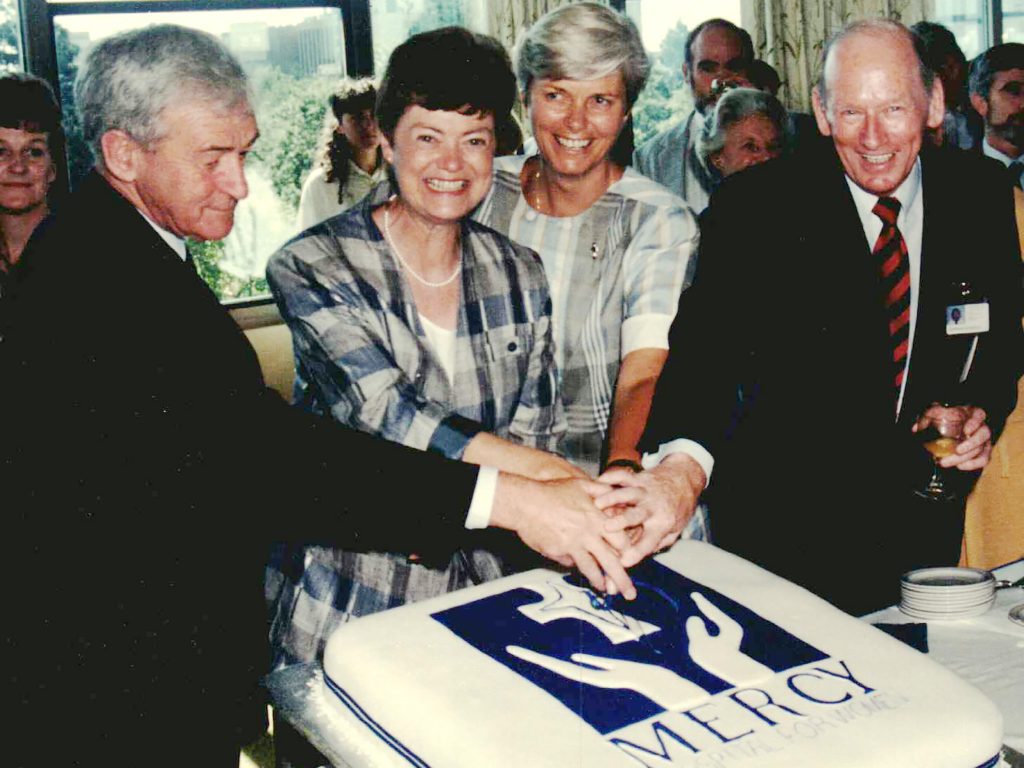
Mercy Maternity Hospital changes its name to Mercy Hospital for Women on its 20th anniversary
-
1984
1 February
Introduction of Medicare to Australia
-
1982
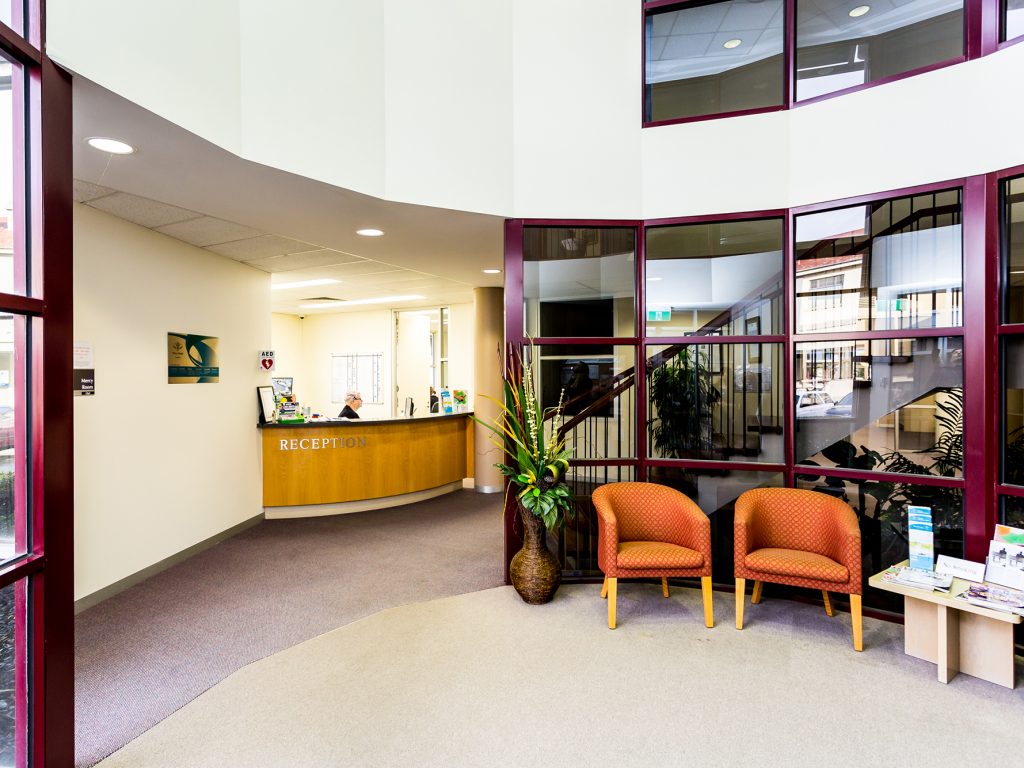
Mercy Palliative Care
The Sisters of Mercy establish the Mercy Hospice in Sunshine to provide specialist palliative care for patients in their home. This would eventually become today’s Mercy Palliative Care.
-
1975
1 July
Medibank begins in Australia
The first public health insurance scheme in Australia.
-
1971
10 February
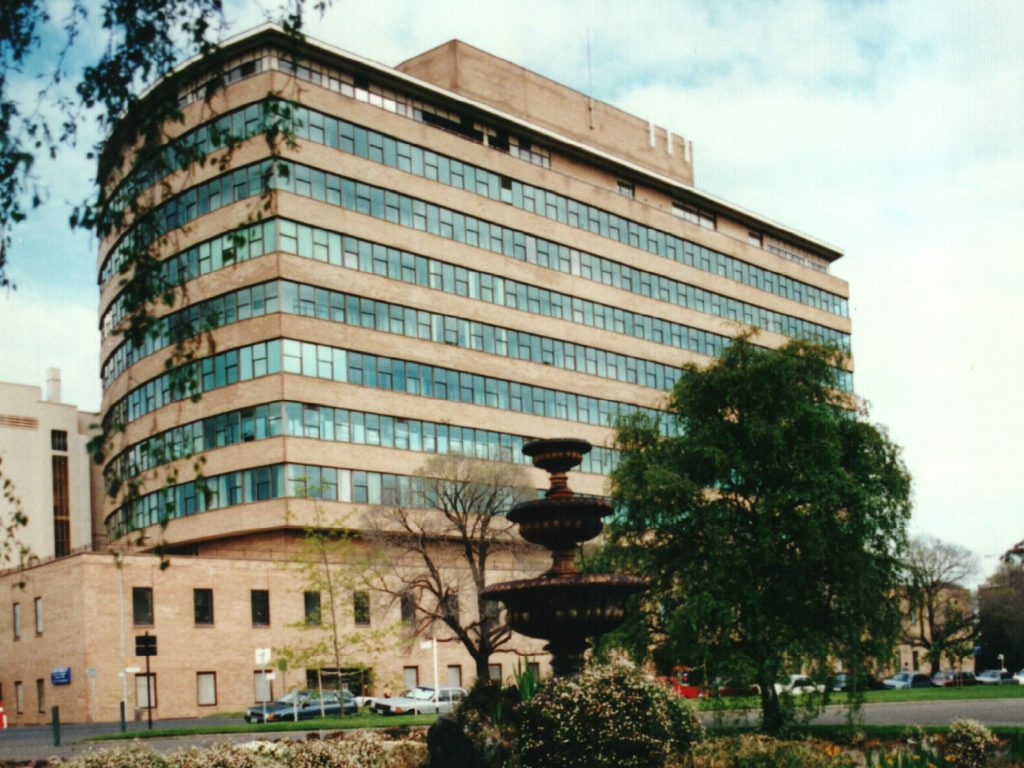
Mercy Maternity Hospital opens to public patients
After fours years of building and many more years of planning and raising funds, Mercy Maternity Hospital opened to public patients on 10 February 1971. It was the first public teaching hospital to open in Victoria in the 20th century and the fulfilment of a decades-long desire by the Sisters of Mercy to open a public hospital to care for the poorer and underprivileged women in the state.
The building was designed by leading hospital architectural firm Stephenson and Turner, with Arthur Stephenson, who designed Mercy Private Hospital, taking a personal interest in its design.
-
-
1967
6 June
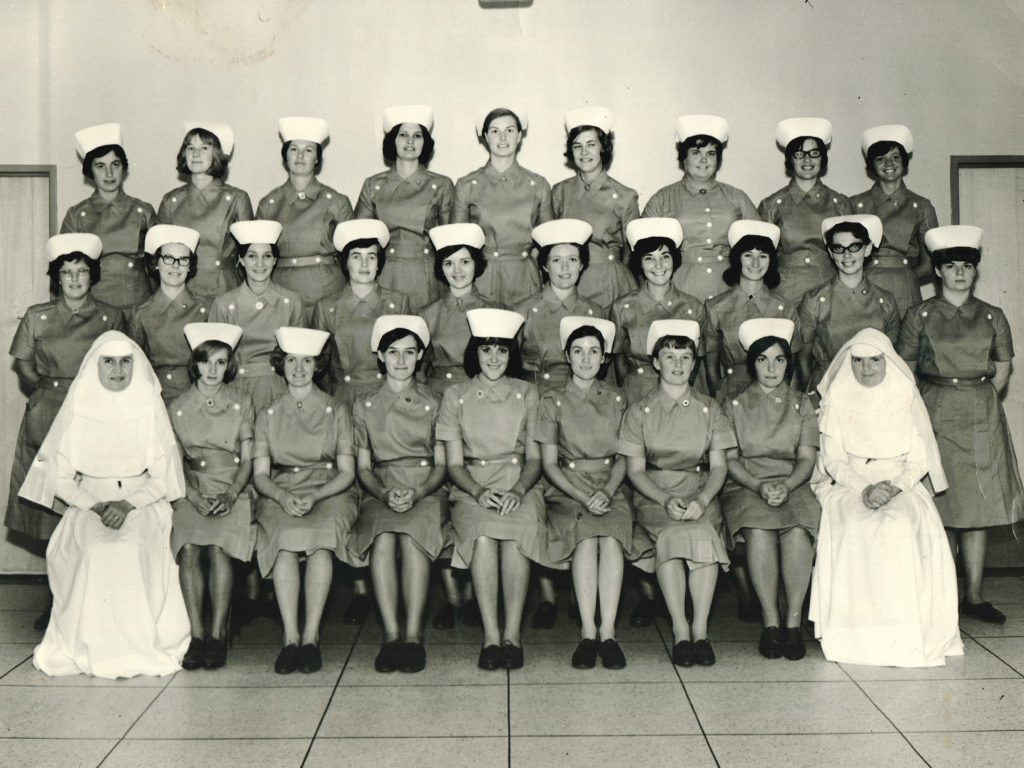
Clinical school established
Mercy Maternity Hospital signs an agreement with the University of Melbourne to establish a clinical school in obstetrics, gynaecology and neonatal paediatrics forging a long relationship in clinical education and the reputation of Mercy hospitals among the great training hospitals in these specialties.
-
1957
Mercy Hospital Albury opens
Cardinal Norman Gilroy opened the five-storey, 90-bed, general hospital which offered medical, surgical, maternity, paediatric care and a nurse training school.
Today, Mercy Health Albury is a major provider of subacute health services, caring for people in Albury and surrounding areas. It offers palliative care, geriatric evaluation and management, transitional aged care, aged care assessment, community therapy and inpatient rehabilitation programs.
-
1956
1 June
Introduction of polio vaccine ends epidemic in Australia
-
1955
to 1975
Vietnam War
-
1895-1988
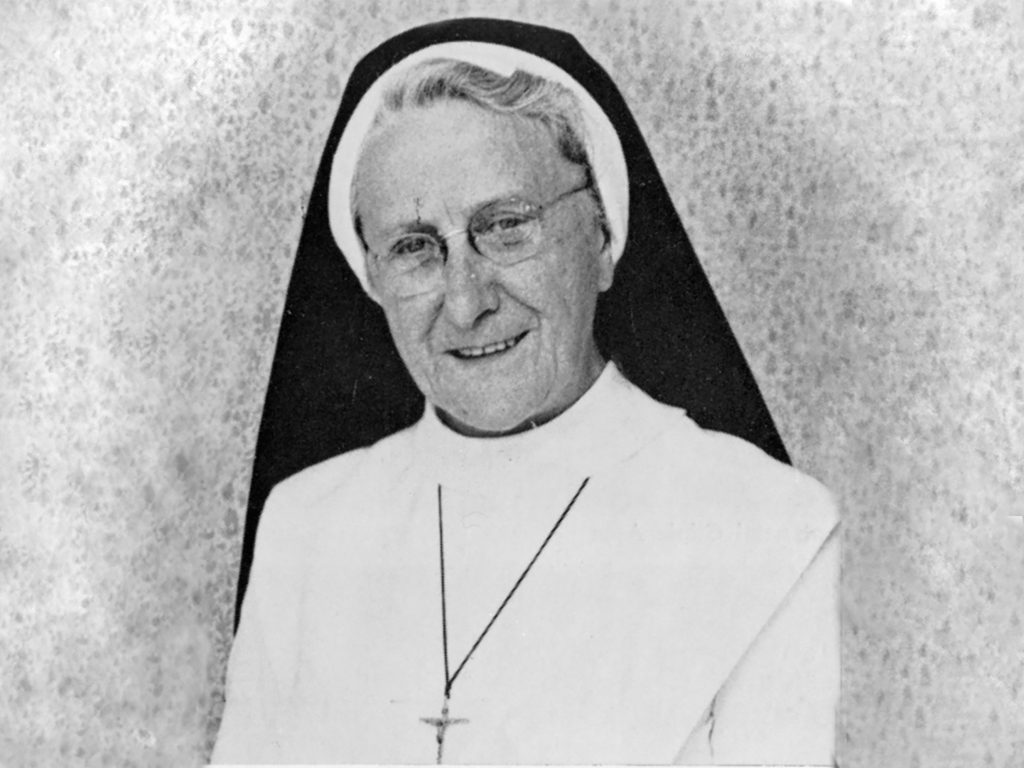
Mother Philippa Brazill RSM DBE
Mother Philippa Brazill RSM DBE (1895-1988) was a Sister of Mercy, a nurse and hospital administrator. When the Mercy Hospital opened in 1935, Sister Philippa was appointed the Foundation Matron. She succeeded Mother Francis Hanigan as Community Superior, becoming Reverend Mother Philippa Brazill in 1948.
From a young girl who left Ireland for faraway Australia to being awarded the Order of Dame Commander of the British Empire, Mother Philippa Brazill inspired a generation of nurses with courage, leadership and compassion.
-
1945
Opening of Mercy Hospital, Young, New South Wales
Today, Mercy Care Centre Young is a 26-bed health service providing a range of outpatient, community health and aged care services for the people of Young and surrounding regions. It specialises in geriatric evaluation and management, rehabilitation and palliative care.
-
1945
Introduction of unemployment and sickness benefits for Australians of working age
-
1939
to 1945
World War II
-
1936
February
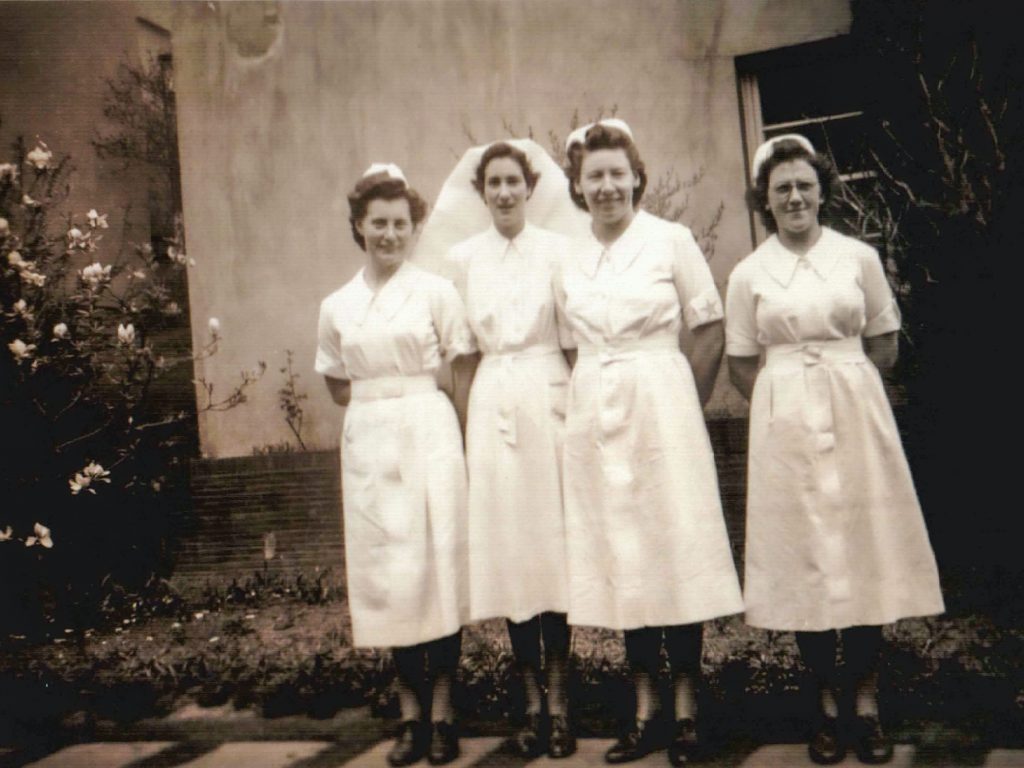
Mercy Hospital cements its reputation as an exemplary general nurse training school
In 1936, Mercy Private Hospital commenced its first nurse training college, cementing its reputation as an exemplary general nurse training school.
At that time, nurses were taught on site and trained for future positions at the hospital. With Mercy Hospital’s high standards of care and thorough attention to detail, the college soon had an excellent reputation of producing high-quality midwives.
-
1930
to 1935
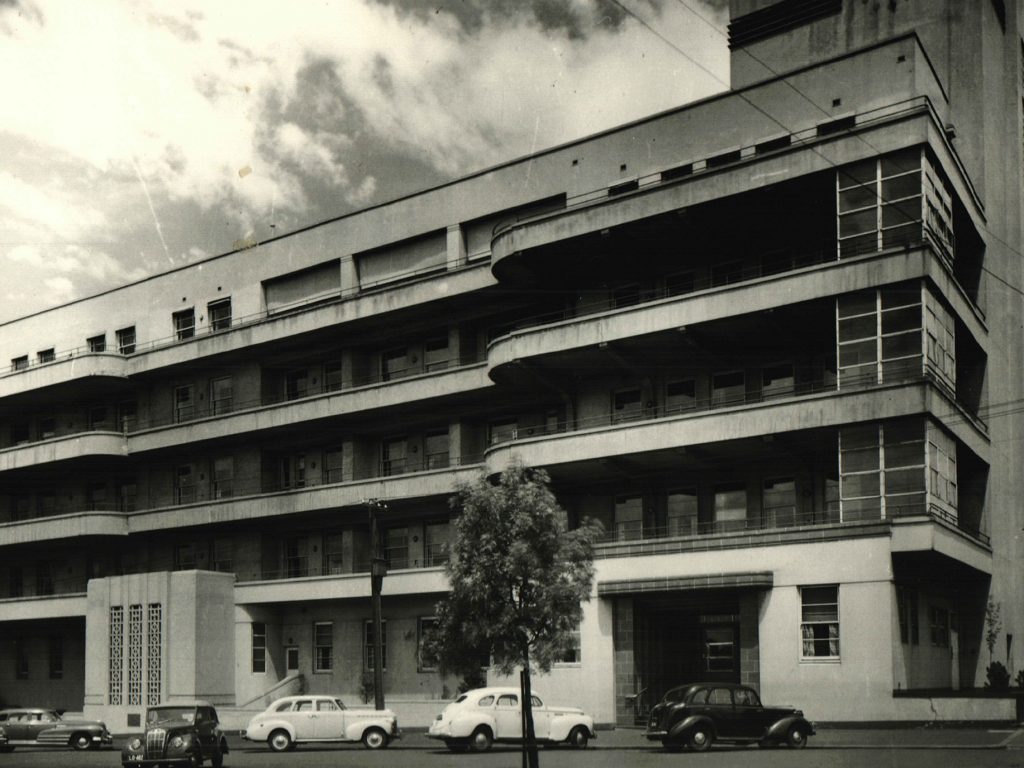
Mercy Hospital opens
Mercy Private Hospital opened in Grey Street, East Melbourne on 2 December 1934. Designed by architectural firm Stephenson and Meldrum (later Stephenson and Turner) in the Bauhaus-influenced Functionalist style, the hospital was built to accommodate the growing needs of Victoria.
The modernist design of the Mercy Hospital was influenced by Arthur Stephenson’s studies of influential designers including Walter Gropius, Le Corbusier and Alvar Alto.
-
The hospital is blessed by His Eminence Cardinal Joseph McRory in front of an audience of 6000 people, including Prime Minister Joseph Lyons. Designed by Architect Arthur Stephenson, the impressive Bauhaus-influenced Functionalist style hospital featured 101 beds, a state-of-the-art operating theatre, a sterilisation facility, laundry, kitchen and chapel.
2 December 1934 -
-
1935
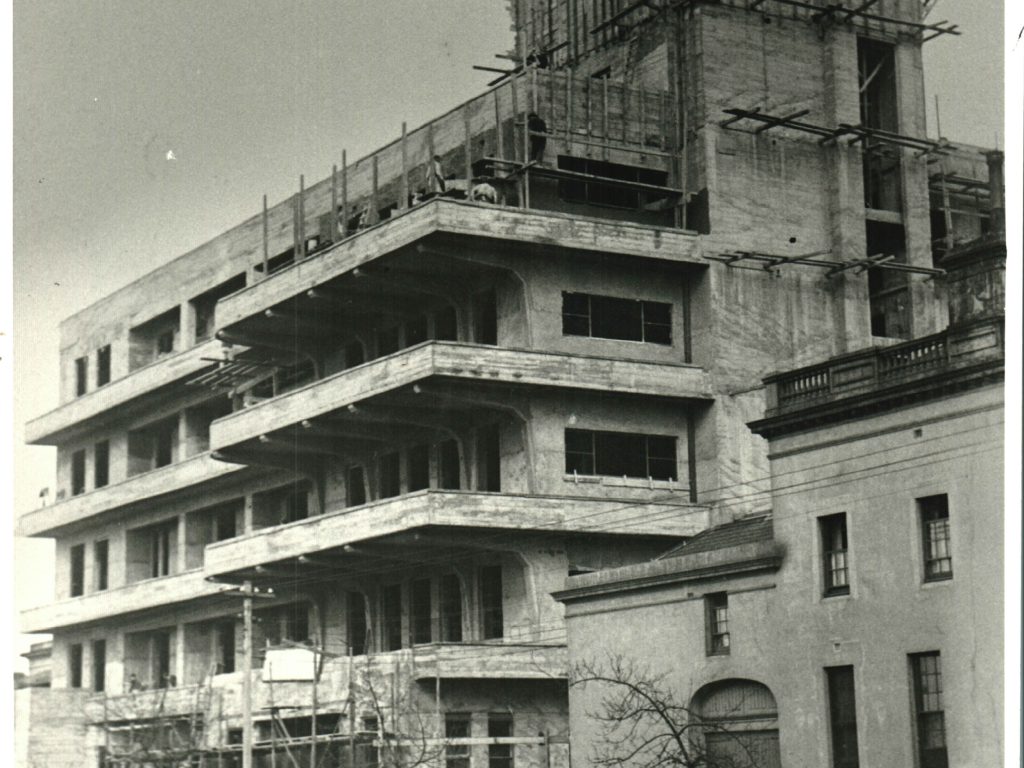
Mercy Hospital – Grey Street, East Melbourne
On 2 December 1934, Mercy Hospital officially opened. The first patient was admitted in April 1935.
Designed by architect Arthur Stephenson, the impressive Bauhaus-influenced Functionalist style hospital overlooked the Fitzroy Gardens and Melbourne central business district from Clarendon Street. The building featured 101 beds, a state-of-the-art operating theatre, a sterilisation facility, laundry, kitchen and chapel.
Mercy Hospital opened to the community in 1935 to resounding praise for its modernist architectural ingenuity. The design marked a revolution in Australian hospitals and placed architects Stephenson and Meldrum (1921-37) who later became Stephenson and Turner (1938-95) as leaders in new-age building. Mercy Hospital is recognised as the first in a series of modernist hospitals that incorporated cutting-edge innovation.
Stephenson and Meldrum was established by Arthur Stephenson, a pioneer of modernist hospital design in Australia, and the name continues through a practice based in New Zealand today.
-
1930
Sisters' whirlwind hospital tour of the USA
Recognising the importance of having state-of-the-art facilities, the Sister Superior of St Benedict’s Hospital, Mother Francis Hanigan, and her second Assistant, Sister Philippa Brazill, embarked on a six-month trip of the United States in 1930 to inspect the latest in hospital architecture and functionality. They visited St Vincent’s in Los Angeles and The Children’s Hospital in Detroit, Michigan, among others.
Studious attention to the most up-to-date, best practice in hospital and service design and a willingness to innovate became marks of Mercy healthcare.
-
1921
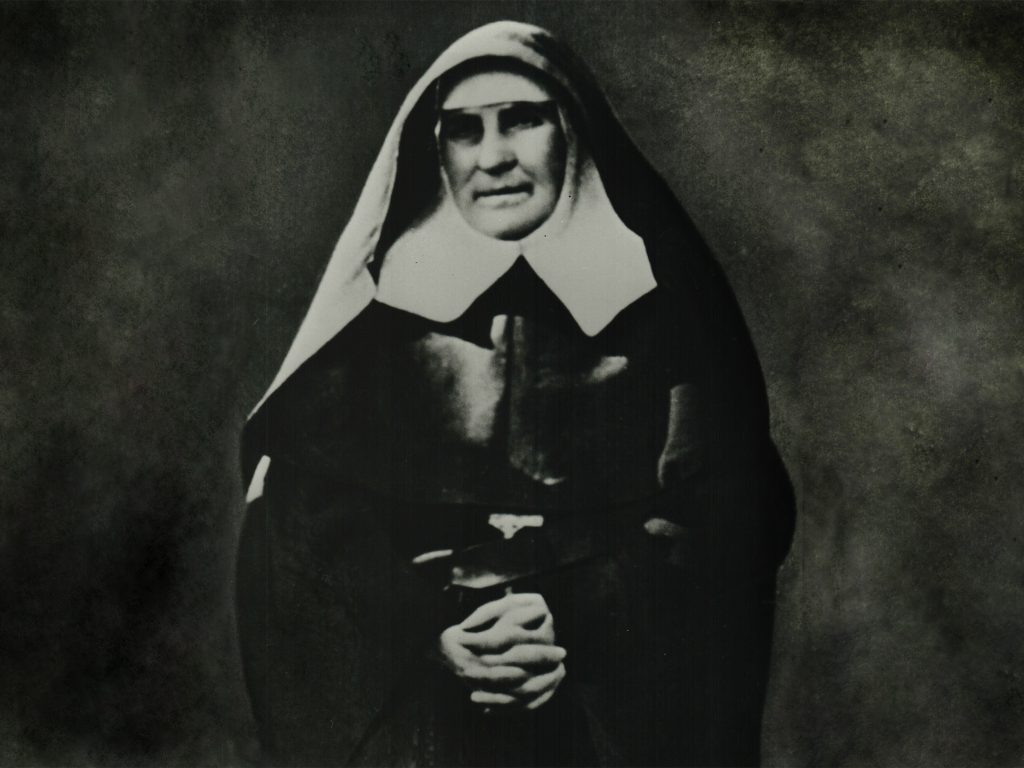
Mother Francis Hanigan (Rose Hanigan)
In 1921, Mother Francis Hanigan (1864-1952) was appointed as the first Sister Superior of St Benedict’s Hospital in Malvern, making her the first leader of a Mercy hospital in Victoria. Under her leadership, St Benedict’s Hospital became known for extraordinary hospitality, compassionate care and caring for people at every stage of life. Sr Francis later purchased the land in East Melbourne where Mercy Hospital was built and was the Sister Superior there until 1948.
Since arriving in Melbourne in 1857, the Sisters of Mercy have been at the forefront of healthcare innovation and advocacy in Victoria. With the opening of St Benedict’s Hospital, they started a tradition of excellence in care and hospitality. The success of St Benedict’s Hospital enabled the sisters to open Mercy Hospital in East Melbourne in 1934, Mercy Maternity Hospital (later renamed Mercy Hospital for Women) in 1971 and Werribee Mercy Hospital in 1994.
-
1920
9 March
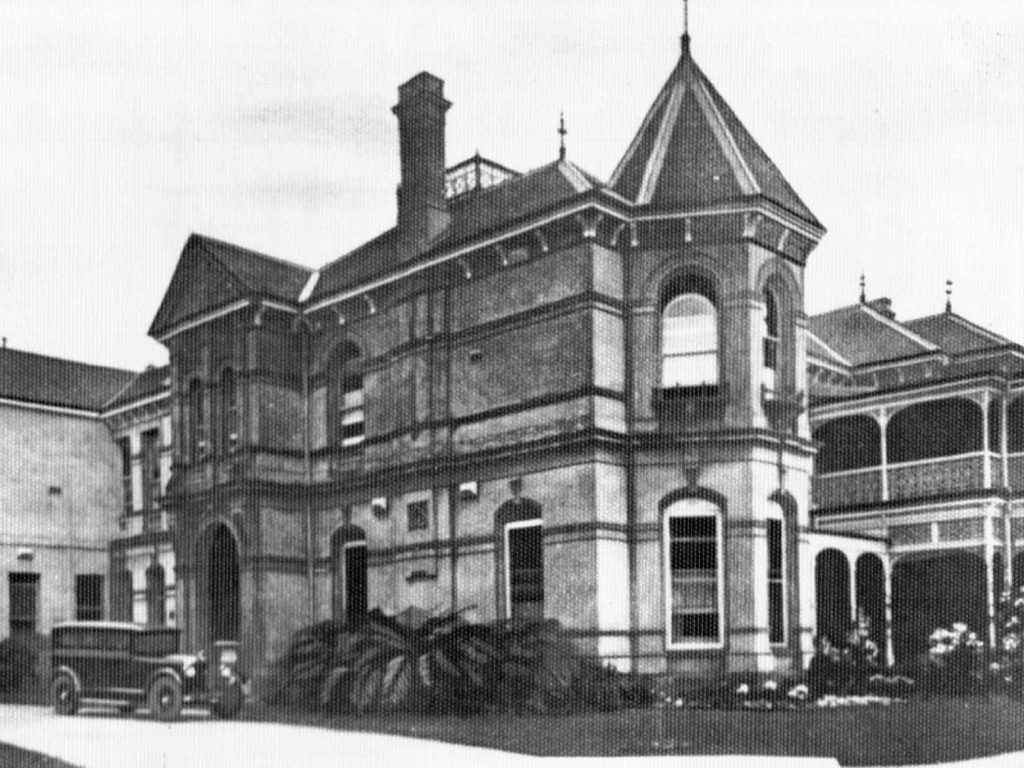
The Sisters of Mercy open St Benedict's Hospital in Malvern
On 9 March 1920, the Sisters of Mercy opened their first private hospital in Melbourne: St Benedict’s Hospital, on Coonil Crescent, Malvern.
The Sisters of Mercy established St Benedict’s in the wake of the deadly pneumonic influenza pandemic, also known as the Spanish Flu. The global pandemic began in 1918 and arrived in Australia on 27 January 1919. Facing the struggles of a post-World War I Australia, these founding women saw the need for a hospital to care for the vulnerable.
Through the courage, persistence and determination of the pioneering Sisters of Mercy, the foundations of Mercy Health were established.
-
1919
27 January
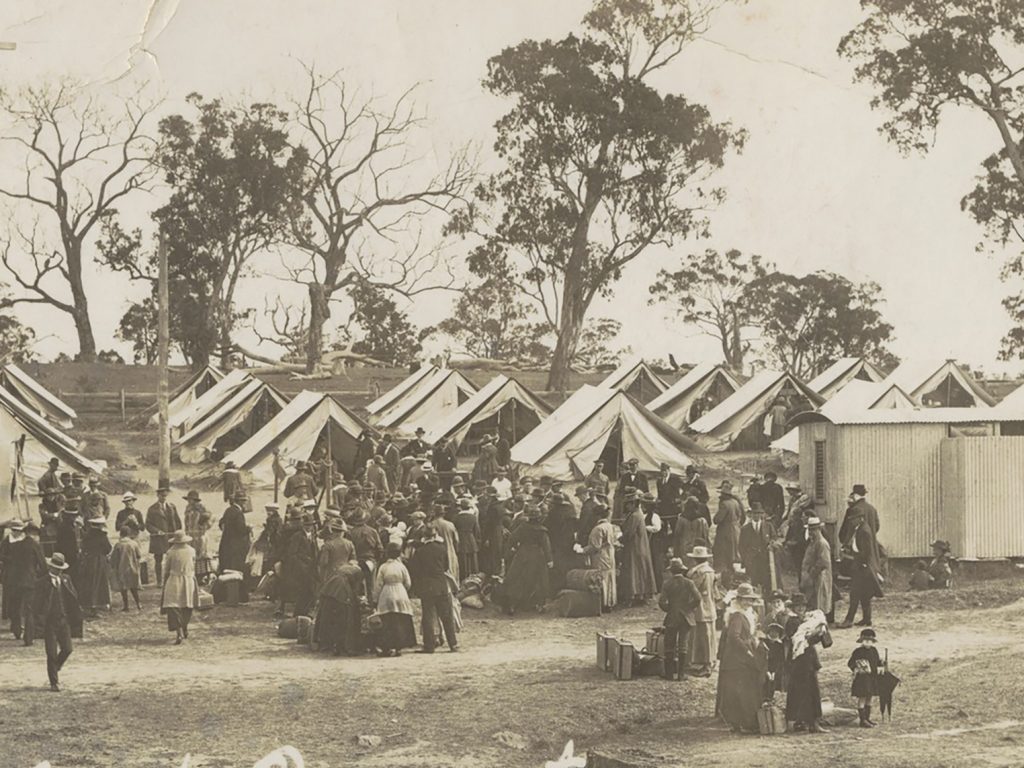
The Spanish flu arrives in Australia
-
1914
to 1918
World War I
-
Introduction of a maternity allowance in Australia
1912
Introduction of old age and invalid pensions
1908
Women allowed to vote in Federal election
1902
-
1901
1 January
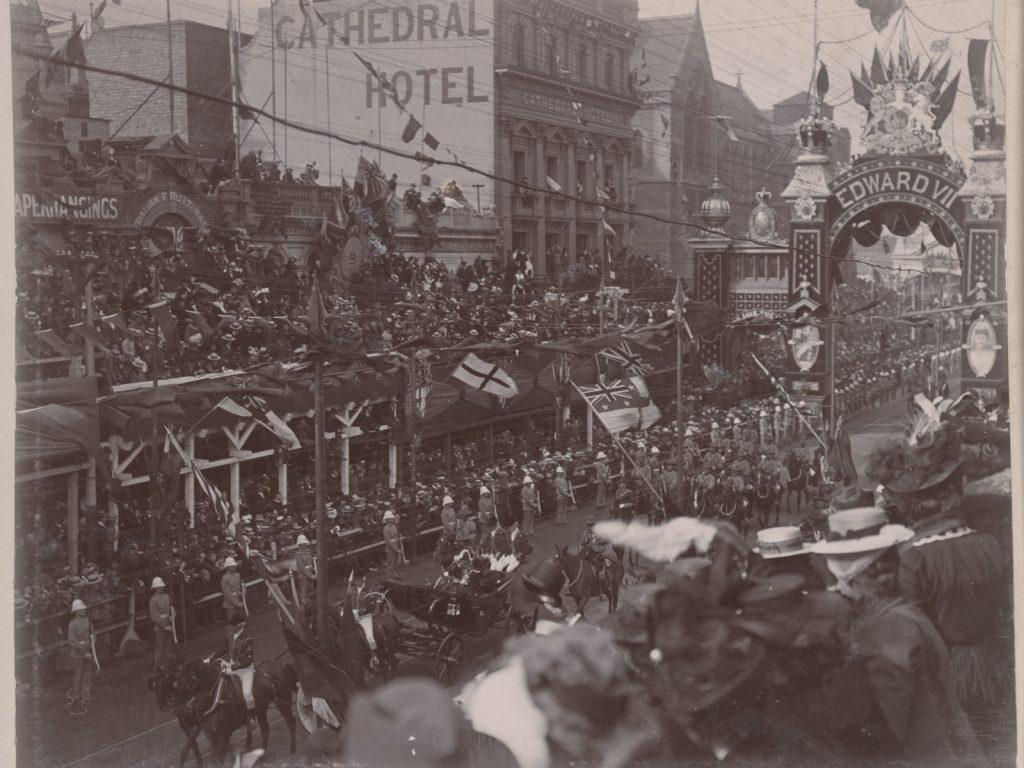
Federation of Australia
Australia officially became a nation on 1 January 1901, with the opening of the first parliament in Melbourne on 9 May 1901.
-
Bubonic plague arrives in Australia
1900 on 19 January
The fourth and final wave of the Cholera epidemic hits London
1866
-
1854
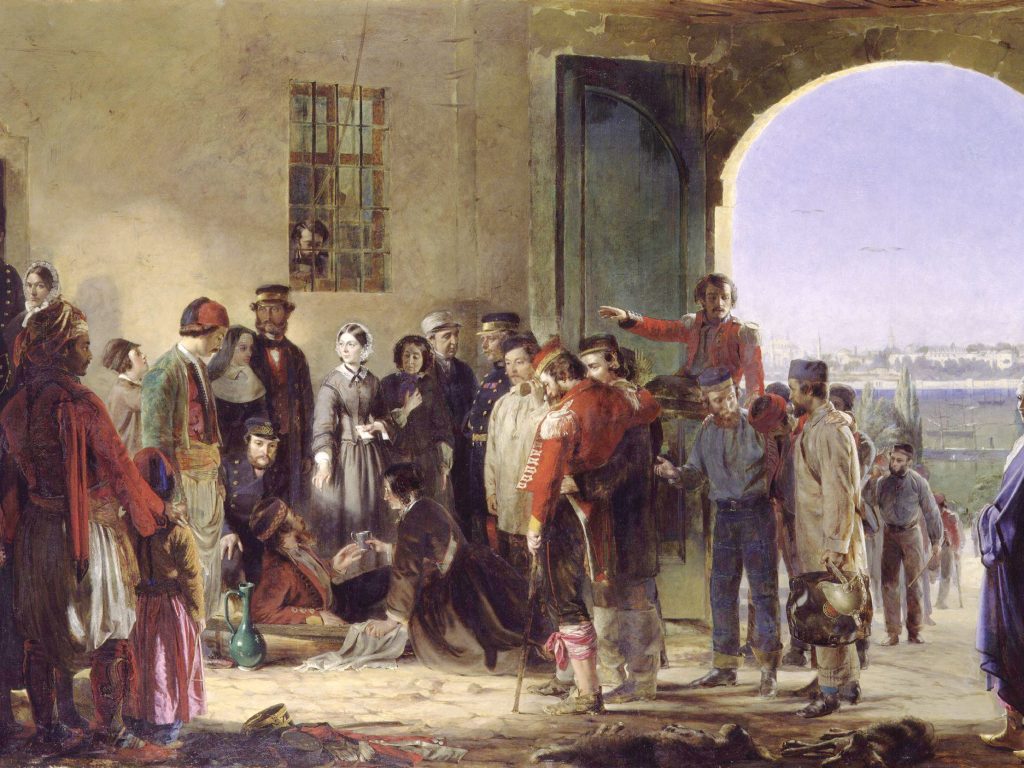
Crimean War
In December 1854, the Sisters of Mercy and Superior Mother Mary Frances Bridgeman travelled to Crimea to care for soldiers left sick and wounded from the battles of the Crimean War. In collaboration with Florence Nightingale, the Sisters provided exceptional care to the soldiers despite grueling working conditions.
When the Sisters were about to return home to Ireland in March 1856, Florence Nightingale praised them, saying “What you have done for the work, no one can say. The gratitude of the army is yours.”
-
1846
8 January
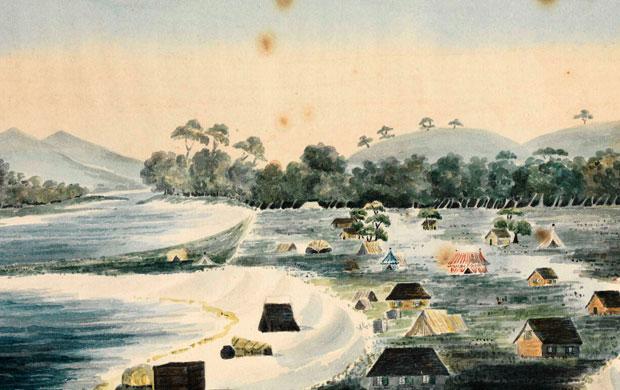
Sisters of Mercy arrive in Australia, from Dublin
The Sisters of Mercy founded schools, hospitals and convents around the world, including in Australia. They arrived in Western Australia in 1846, led by Mother Ursula Frayne.
After being recruited by Western Australia’s Vicar-General Bishop John Brady (1800–1871), Mother Ursula, along with five Sisters of Mercy and a postulant, departed by sea from Dublin, Ireland. They reached Western Australia on 8 January 1846 and by 1849 opened the first secondary school for students who were almost exclusively non-Catholic.
Despite very little financial support from the government and the Bishop, Mother Ursula refused to walk away from her mission in Western Australia. Her determination paid off and she, along with the Sisters, set up the first fee-paying school in Western Australia.
After moving to Melbourne in 1857, Mother Urulsa went on to establish further schools, hospitals, convents and orphanages in her mission to bring God’s mercy to those in need.
-
1835
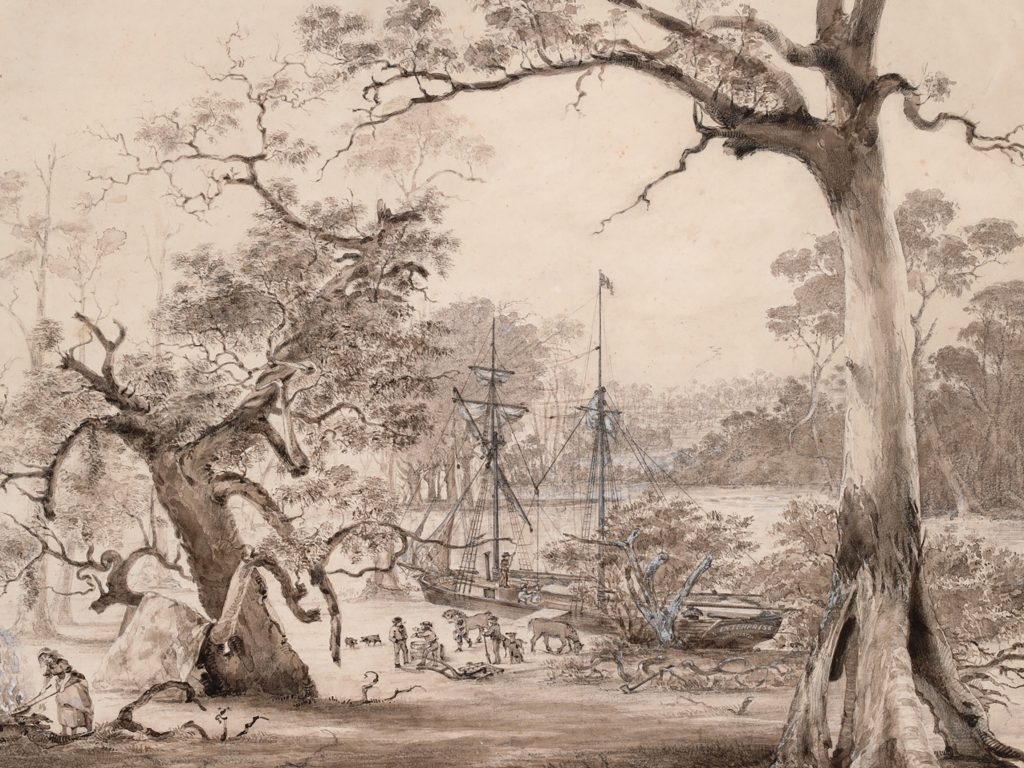
Foundation of Melbourne
Melbourne, was established as a settlement in 1835. Named after Lord Melbourne, the British Prime Minister, Melbourne grew to be proclaimed a city in March 1847 and remained a province of New South Wales until 1851.
-
1832
April
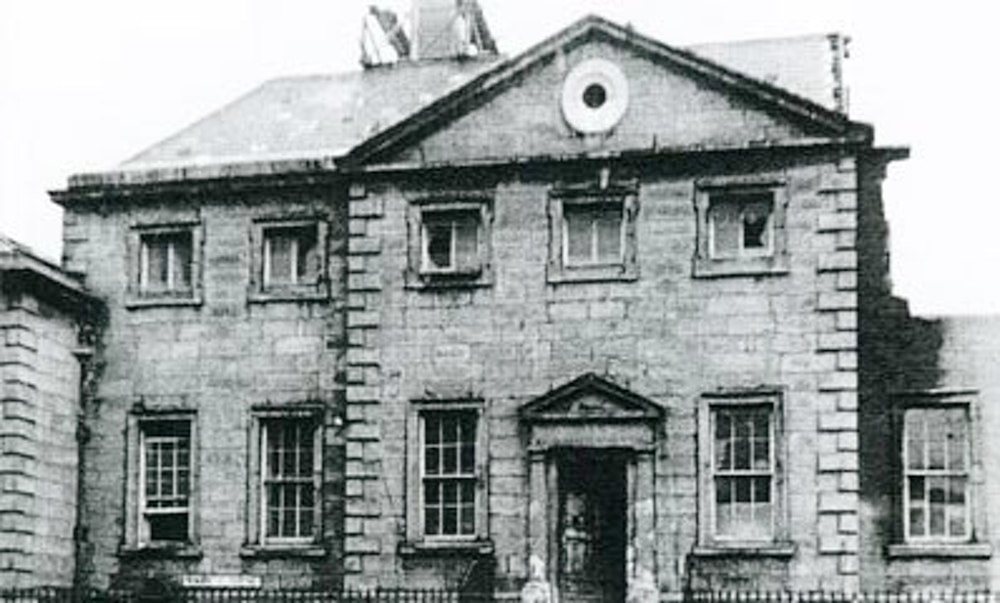
Sisters of Mercy cared for the sick on the frontline of the cholera epidemic
When the cholera epidemic arrived in Dublin, Catherine McAuley was quick to offer the services of the Sisters of Mercy at the Townsend Street Depot Cholera Hospital where they cared for and accompanied the sick and dying. In the face of widespread fear and ignorance about the disease, the Sisters’ work was courageous and selfless.
-
1827
24 September
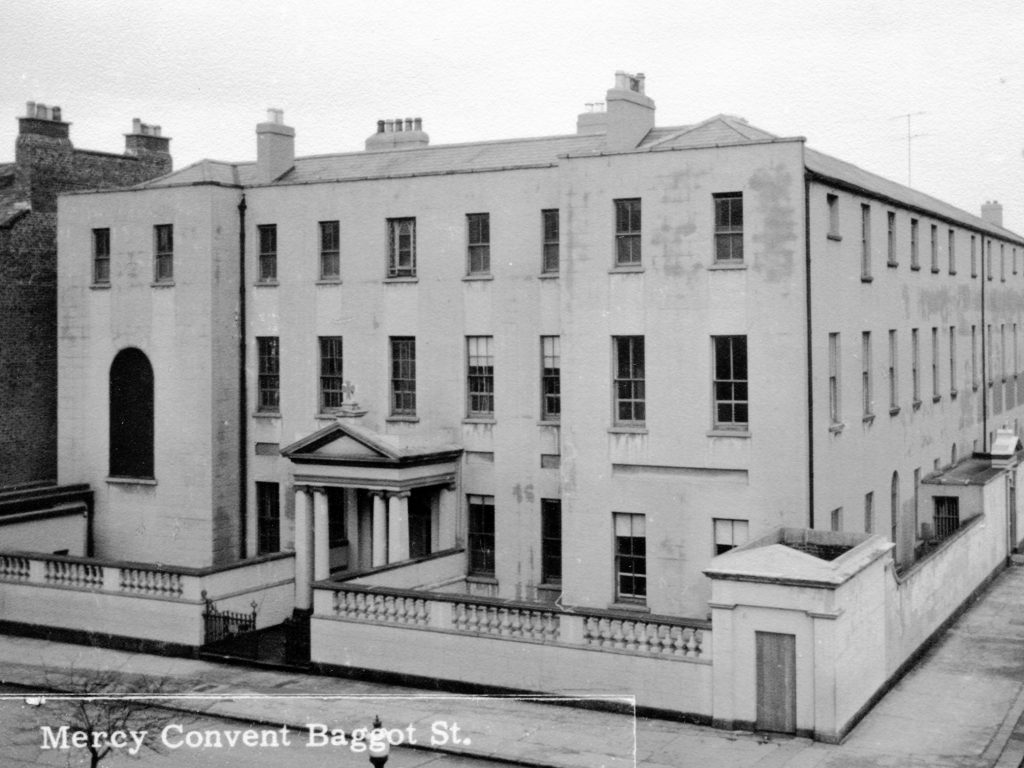
House of Mercy, Dublin, opens
Catherine McAuley, Founder of the Sisters of Mercy, was born in Dublin, Ireland in 1788. She dedicated her life to caring for the poor, particularly women.
Catherine McAuley leased a property on the corner of Baggot and Herbert streets in southeast Dublin with the purpose of building a large house to provide religious, education and social services for poor women and children.
On 24 September 1827, Catherine opened the House of Mercy in Baggot Street, Dublin, fulfilling her mission to house and educate poor women and children.
Few places in the history of the Sisters of Mercy evoke the immediate, deep comfort and affection as the House of Mercy established as a place of refuge and education for women and children.
The House of Mercy still stands in Dublin today – a reminder of the radical hospitality that started the Mercy story.
-
1788-1841
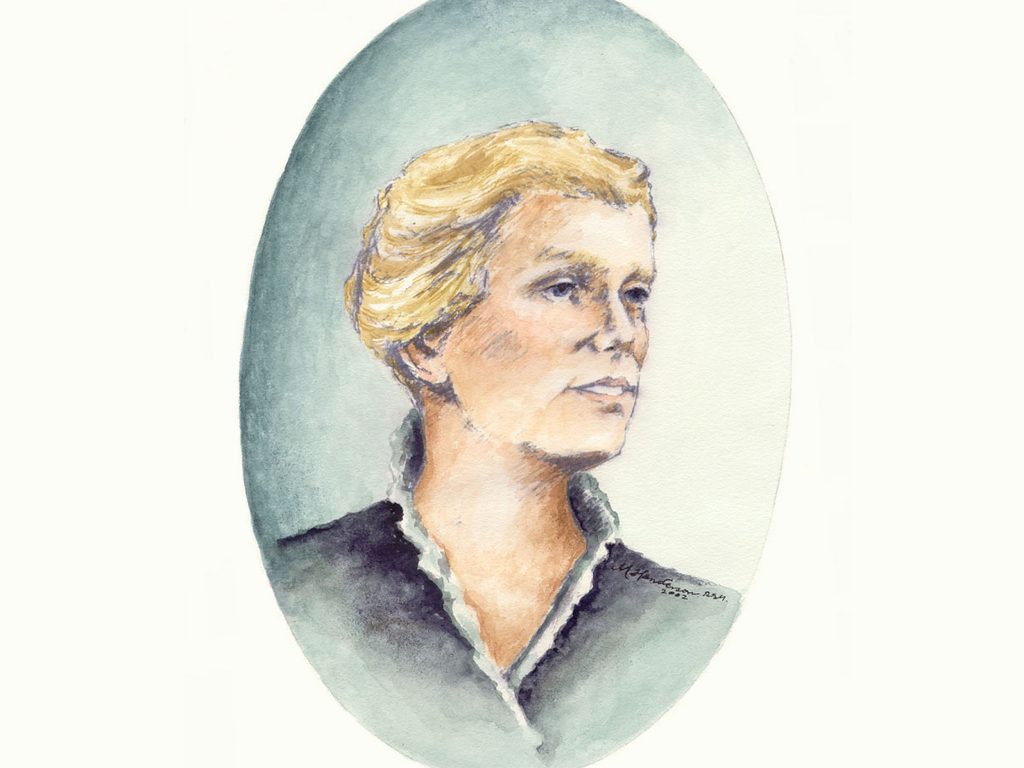
Catherine McAuley
On 12 December 1831, Catherine McAuley made her Profession of Vows with two other Sisters and founded the Order of the Sisters of Mercy in Dublin to provide compassionate help to the poor.
The Sisters of Mercy continue Catherine’s legacy through the ministries they have established around the world in health, education, advocacy for social justice and community service.
Catherine’s life and the lives of the many Sisters of Mercy and lay people who have carried on her work have helped shape and define the modern mission of Mercy Health, in our journey to establish health and healthy ageing across Australia.
